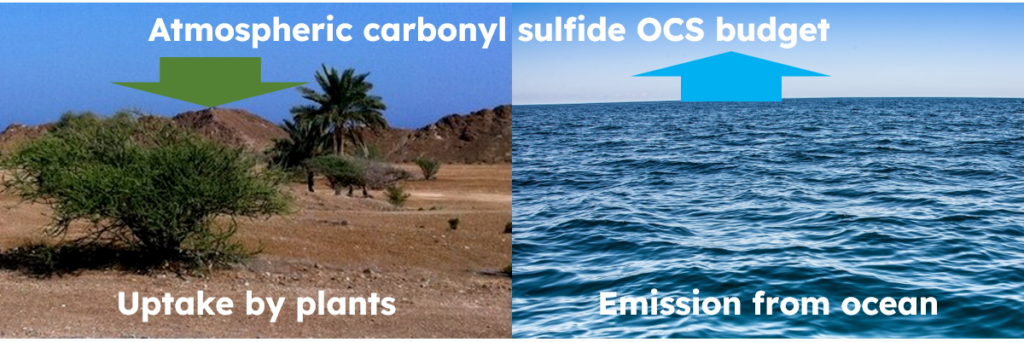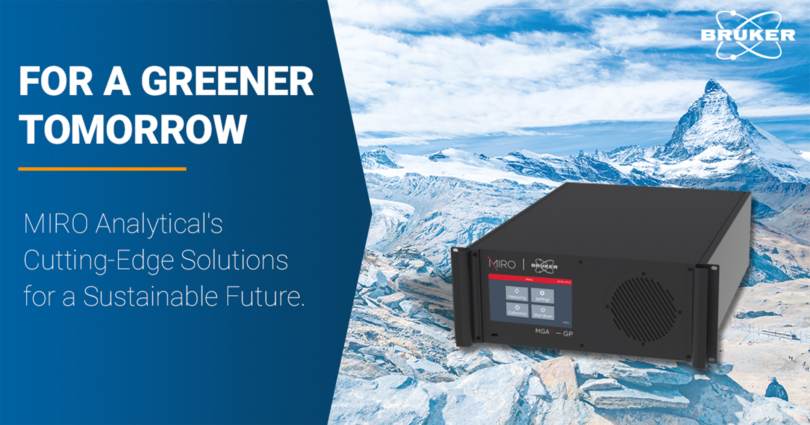In our quest for a sustainable future, monitoring and managing air quality and greenhouse gases have become more critical than ever. Advanced technology plays a pivotal role in this endeavor. By providing the tools needed to understand and mitigate environmental impacts, we aim towards a greener tomorrow.
Molecules like OCS, HONO, and CH2O play an important role in understanding atmospheric phenomena. By measuring them, scientists can improve their knowledge and predictions regarding greenhouse gas emissions, particle formation, indoor air quality, and more. However, measuring these compounds in low concentrations, such as sub-ppb levels, is a significant technical challenge. The MGA gas analyzer is a unique analytical instrument capable of measuring these three gases at such low concentrations.
The MGA Series from MIRO Analytical are powerful laser-based gas analyzers designed for precision and reliability in gas measurement, offering:
- Simultaneous Multi-Gas Measurement of up to 10 gases in real-time.
- High Precision ensuring accurate monitoring of ambient air quality and greenhouse gases.
- User-Friendly Interface which is easy to operate for both professionals and non-experts.
- Versatile Design suitable for a wide range of applications, from environmental to industrial.
There are 4 product lines available, each tailored to different applications:
- MGA3: for the measurement of greenhouse gases or OCS.
- MGA5: for the measurement of the 5 main greenhouse gases.
- MGA10: combining the measurement of greenhouse gases, air pollutants, and atmospheric science gases.
- MGAi-N2O: for the measurement of the isotopes of N2O.
Let’s explore the capabilities of the MGA gas analyzers with some application examples.
Carbonyl Sulfide (OCS)
As the most abundant naturally occurring sulfur compound in our atmosphere, OCS is an integral part of the global sulfur cycle. Participating in the transport, distribution and transformation of sulfur, investigating OCS fluxes helps understanding the global sulfur cycle. The atmospheric OCS budget is mainly dominated by fluxes from the ocean and specific anthropogenic emissions and the uptake by plant leaves on land. Similar to its carbon dioxide (CO2) counterpart, OCS can enter leaves for photosynthesis and is destroyed by plant cells. Because the CO2 budged is more complex with emissions and sinks at the same time and place, OCS is a potential tracer on the atmospheric carbon cycle as it is relatively inert in the atmosphere.

Besides volcanic eruptions, most of the sulfur that reaches the stratosphere is OCS because it is the longest-lived sulfur compounds found in the troposphere. Therefore, OCS is the dominant precursor of sulfate aerosols in the stratosphere, in the layer at about 15 to 50 km altitude. These aerosols have strong cooling radiative forcing by reflecting incoming sun light.
Nitrous Acid (HONO)
HONO is a particularly urban topic due to several factors that are unique to urban environments. Urban areas have numerous sources of HONO, including vehicle emissions, industrial activities, and biomass burning. These sources are more concentrated in cities, leading to higher levels of HONO compared to rural areas. Urban environments provide a variety of surfaces, such as buildings, roads, and other infrastructure, where nitrogen dioxide (NO2) can react to form HONO. These heterogeneous reactions are more prevalent in cities due to the abundance of these surfaces. Urban areas can have unique microclimates with higher humidity and temperature variations, which can influence the formation and concentration of HONO. For example, higher humidity can enhance the conversion of NO2 to HONO on surfaces. The high levels of HONO in urban areas contribute significantly to the formation of secondary pollutants, affecting air quality and public health.

Formaldehyde (CH2O)
Gaseous formaldehyde is a prominent indoor air pollutant. It is emitted from various sources such as building materials, furnishings, and consumer products like paints, adhesives, and cleaning agents. Additionally, formaldehyde is a by-product of combustion and certain natural processes. Therefore, activities like smoking, using unvented fuel-burning appliances, incense sticks, or mosquito coils can significantly increase indoor formaldehyde levels. Moreover, formaldehyde levels are particularly elevated in newly constructed or renovated buildings. This highlights the importance of monitoring and mitigating indoor formaldehyde concentrations.

Indoor Air Quality (IAQ) is crucial because we spend approximately 90% of our lives indoors. Poor IAQ can lead to a range of health issues, including respiratory diseases, heart disease, cognitive deficits, and even cancer. Indoor air quality can vary more than outdoor air quality. Individuals are often more directly exposed to emitting sources, which leads to higher inhalation rates. Formaldehyde is a significant factor in indoor air quality due to its widespread use and presence in our daily lives. It is used extensively in the manufacturing of building materials and various household products. This can lead to substantial concentrations indoors of up to 0.2 ppm compared to single-digit ppb levels outdoors. The emission rates of wooden furniture, for instance, depend on factors such as wood species, moisture content, outside temperature, and time of storage.
Conclusion
Systems like the MGA series from MIRO Analytical are pivotal for a greener tomorrow. They support both environmental and industrial applications with the aim to identify and mitigate sources of pollution. This capability is crucial for developing effective strategies to reduce emissions, improve air quality, and ultimately achieve a more sustainable and healthier environment. By adopting sustainable practices today, we can ensure a greener tomorrow for future generations.
Explore more important environmental and health-related molecules with MIRO Analytical’s blog, the Molecule of the Month:
Would you like to learn more about our gas analysis solutions for a greener tomorrow? Then have a look at our other blog posts covering interesting topics such as monitoring atmospheric pollution.








